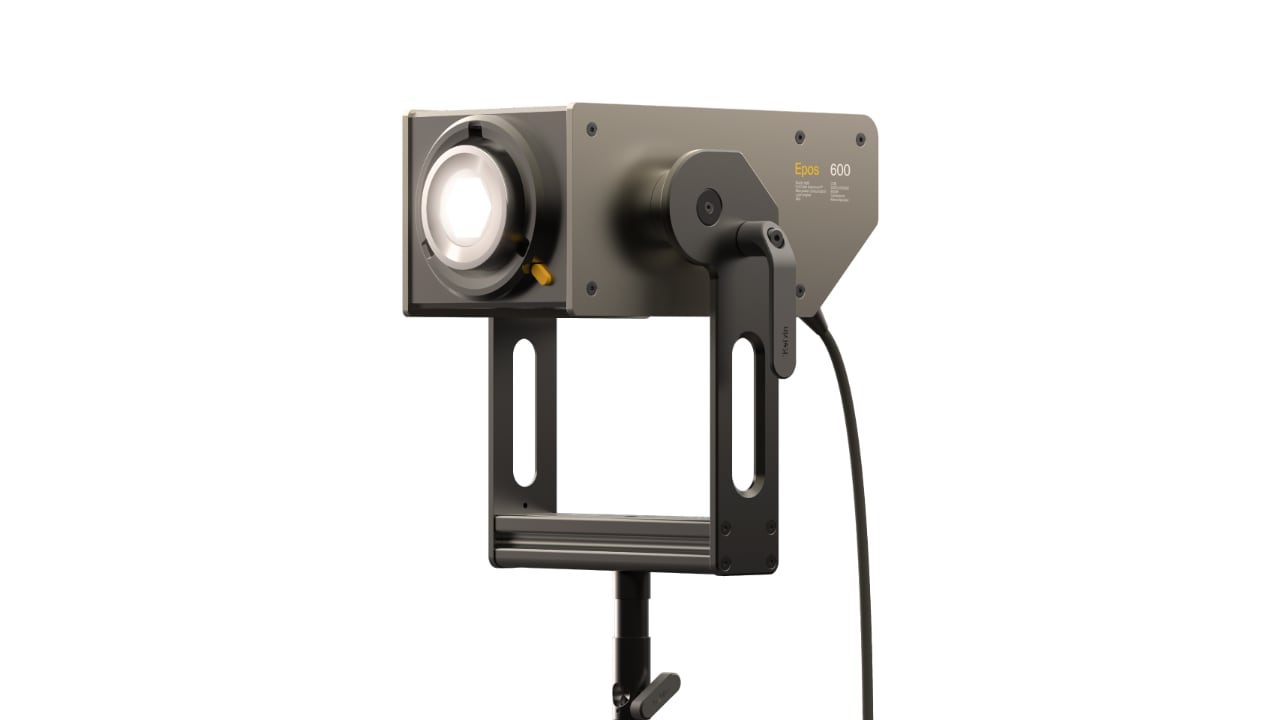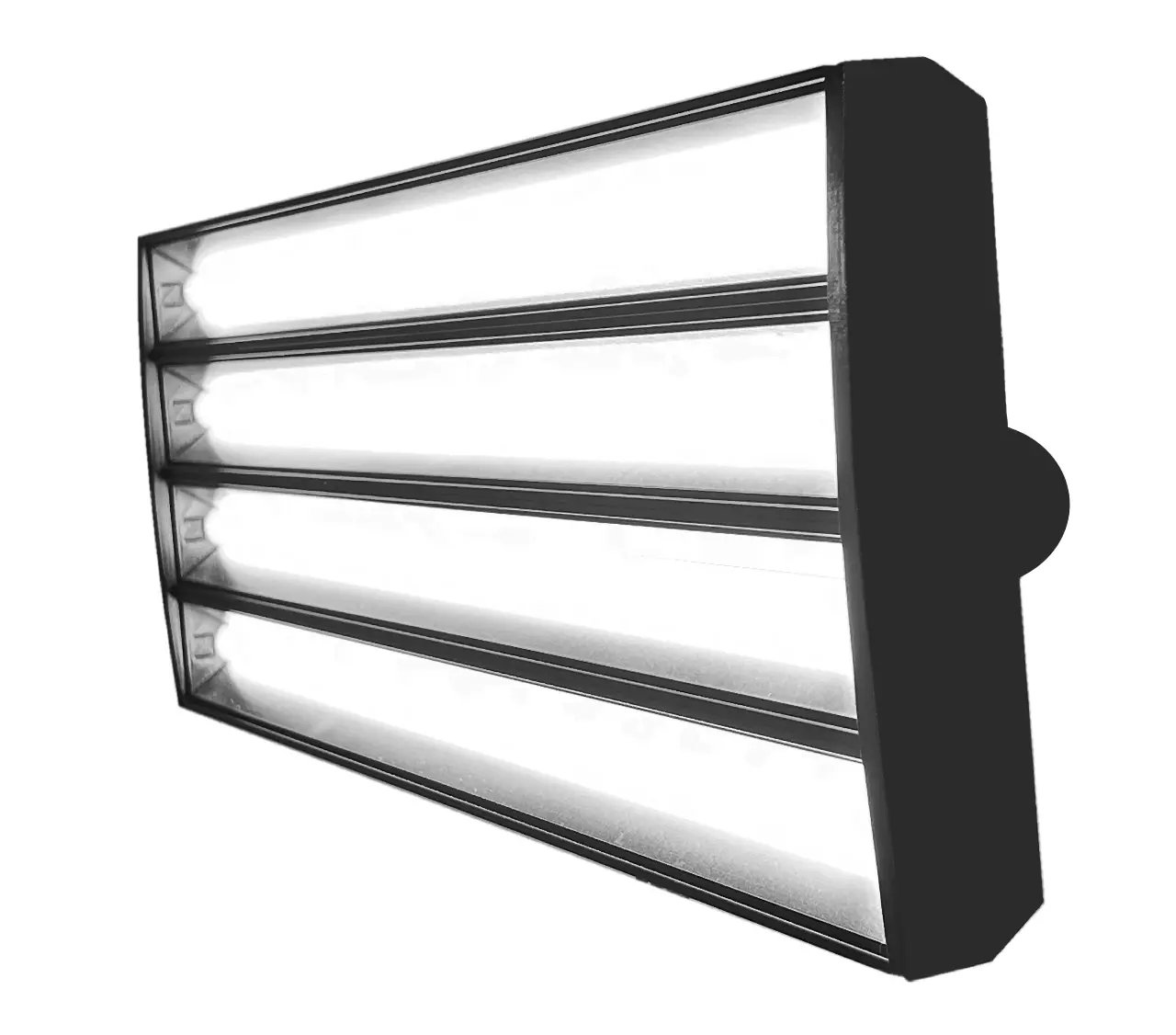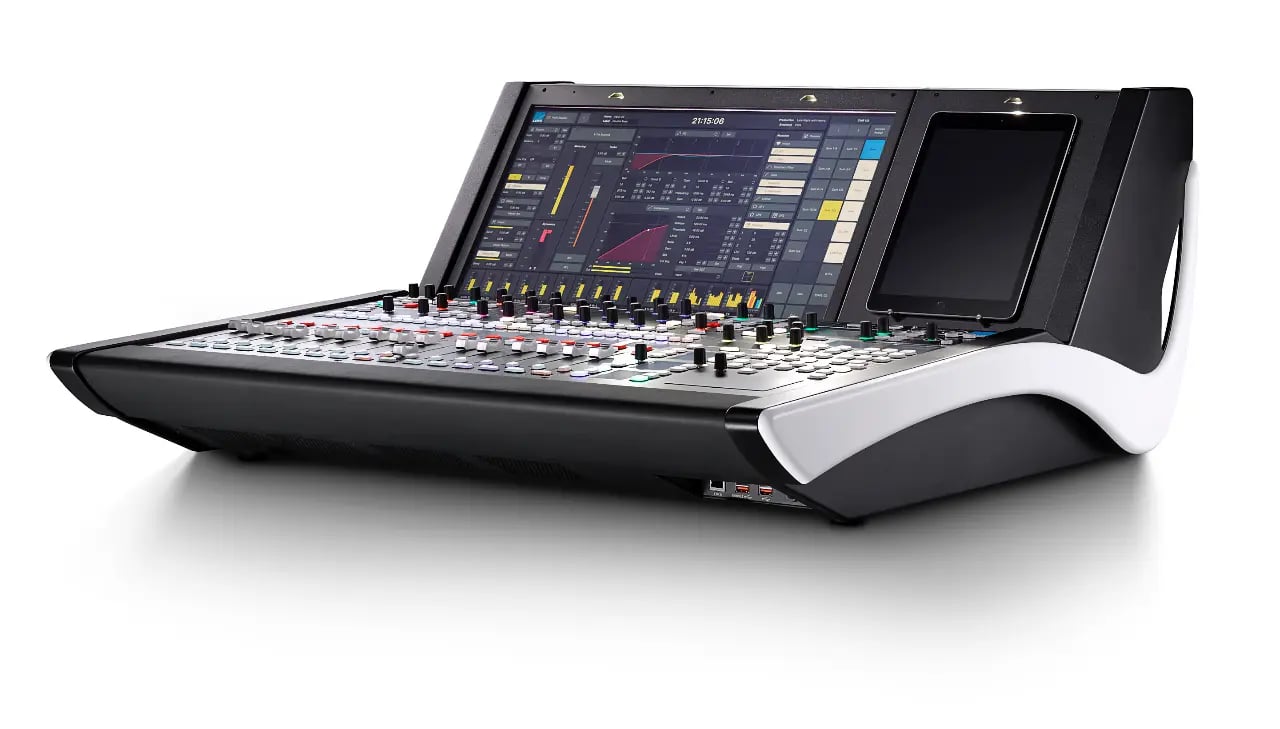
Proof that what happens in Vegas doesn’t always stay in Vegas. Featuring (deep breath) Autodesk, BB&S, Colorfront, Kelvin, Lawo, LumaFusion, Meike, Miller Tripods, NANLUX, Tilta, and Zero Density.
Tilta’s Nucleus Nano II
 Tilta’s Nucleus Nano II is an upgraded version of the successful Nano wireless lens control system that combines camera control, gimbal control, and motor control into a single unit. It features an intuitive touchscreen, high-torque motor, long-lasting battery, and multi-channel communication, while its compatibility with other Tilta devices and DJI gimbals makes it a versatile product that can be used in a variety of workflows.
Tilta’s Nucleus Nano II is an upgraded version of the successful Nano wireless lens control system that combines camera control, gimbal control, and motor control into a single unit. It features an intuitive touchscreen, high-torque motor, long-lasting battery, and multi-channel communication, while its compatibility with other Tilta devices and DJI gimbals makes it a versatile product that can be used in a variety of workflows.
Price is $299 and it ships in June.
Autodesk boosts Flame
 Autodesk Flame is looking to further solidify its role as a centralized hub for conform, timeline, VFX, publishing, color, and delivery. A new metadata overlay feature lets artists view shot metadata in context, directly in the Flame viewer UI, providing easier monitoring and tracking of shots when collaborating across teams, which is a nice feature. Batch Paint has been updated with the ability to apply changes to multiple strokes at once and track strokes directly within the Paint node and with new additional support for native Apple silicon, Flame artists can also do more faster.
Autodesk Flame is looking to further solidify its role as a centralized hub for conform, timeline, VFX, publishing, color, and delivery. A new metadata overlay feature lets artists view shot metadata in context, directly in the Flame viewer UI, providing easier monitoring and tracking of shots when collaborating across teams, which is a nice feature. Batch Paint has been updated with the ability to apply changes to multiple strokes at once and track strokes directly within the Paint node and with new additional support for native Apple silicon, Flame artists can also do more faster.
LumaFusion adds multicam editing
LumaFusion has a new add-on in the shape of the $19.99 Multicam Studio for syncing, switching and editing clips from multiple camera and audio sources - all within the (also $19.99) LumaFusion app. Up to six camera sources and audio tracks can be automatically synced.
“Because Multicam Studio for LumaFusion was specifically designed for the touchscreen experience, it provides an entirely new, innovative, yet clean and simple workflow for multicam editing unlike anything in the industry; it is a true first,” says the company, and it might very well have a point.
NANLUX releases Evoke 900C
 The new Evoke 900C is a high power spotlight equipped with a RGBLAC colour mixing system that offers full colour tunability. It boasts an impressive 12,940 lux@3m (at 5600K, with 45°reflector) illumination at a rated output of 940W. The fixture adopts the increasingly popular RGBLAC six color mixing system -- adding Lime, Amber and Cyan on top of the primary colors RGB, enabling it to achieve high colour accuracy with CRI/TLCI both rated at 96. It also features G/M±200 tunability, allowing for not only precise G/M adjustment, but also accurate matching with any other light sources on the market. All parameters and shifts are visible on an upgraded 3.5 inch full-color screen, with a 4-button and 3-knob UI design makes tuning rather simple and straightforward.
The new Evoke 900C is a high power spotlight equipped with a RGBLAC colour mixing system that offers full colour tunability. It boasts an impressive 12,940 lux@3m (at 5600K, with 45°reflector) illumination at a rated output of 940W. The fixture adopts the increasingly popular RGBLAC six color mixing system -- adding Lime, Amber and Cyan on top of the primary colors RGB, enabling it to achieve high colour accuracy with CRI/TLCI both rated at 96. It also features G/M±200 tunability, allowing for not only precise G/M adjustment, but also accurate matching with any other light sources on the market. All parameters and shifts are visible on an upgraded 3.5 inch full-color screen, with a 4-button and 3-knob UI design makes tuning rather simple and straightforward.
Kelvin’s Epos 600 & Play
 While we’re on lights, Kelvin had a very successful Vegas, with its new $3999 Epos 600 winning a clutch of awards (and also available for fairly hefty pre-order discounts until the end of May).
While we’re on lights, Kelvin had a very successful Vegas, with its new $3999 Epos 600 winning a clutch of awards (and also available for fairly hefty pre-order discounts until the end of May).
It’s another RGBACL light, albeit with the added benefit of a IP54 weather rating and a very pleasing industrial design. Here’s the feature list:
- 600W full spectrum LED COB studio light
- Cantastoria™ RGBACL Six-Color Light Engine (patent pending)
- CRI 98 | TLCI 99 | CQS 97 | SSI 86 @3200K | SSI 74 @5600K
- 2000K to 20000K CCT
- IP rating 54
- Bluetooth, Kelvin Narrator App for iOS/Android, DMX, Lumen Radio/Wireless DMX (built-in)
- V-Mount, B-Mount or Gold Mount (end-user editable)
- Bowens mount with Kelvin MagTech™ (proprietary)
- USB-C, USB-A
- 6mm aluminium housing
- Comes with a durable water resistant semi soft rolling case
Also very well worth a mention is a world’s first from the company: the $249 Kelvin Play– the world’s first RGBACL panel light which also features powerful magnets so you can stick it almost anywhere. Well, anywhere metallic that is.
Meike unveils 85mmF1.4 lens
 The 85mm F1.4 is a full-frame mirrorless lens with large aperture. This lens has manual/auto switch, as well as a custom button, support Sony E, Nikon Z, Panasonic L and Canon RF Mount
The 85mm F1.4 is a full-frame mirrorless lens with large aperture. This lens has manual/auto switch, as well as a custom button, support Sony E, Nikon Z, Panasonic L and Canon RF Mount
Specification:
- Focal Length: 85mm
- Format: Full Frame
- Filter Thread: 77mm
- Lens Construction: 8 Groups 13 Elements
- Aperture Range: F1.4-F16
- Minimum Focusing Distance: 0.98m
- Diaphragm Blades: 12
- Full-Frame Angle:Diagonal 28.87°Horizontal 24.1° Vertical 16.14°
Colorfront adds 8K/HDR streaming features
Off site, Colorfront had an impressive demo of ‘live’ streaming of 8K footage, using just hotel broadband. The set up featured Colorfront Transkoder running in AWS, reading, de-Bayering and processing 8K Sony Venice 2 and Red RAW camera footage directly from AWS S3 cloud object storage, and streaming 8K video to the Colorfront Streaming Player running on a Mac Mini with an HDMI 2.1 video connection used to display the results in HDR on an 8K LG 77-inch OLED TV.
Also new while the company was in Vegas, Colorfront Transkoder got a speedy new Mac Studio platform. And On-Set Dailies and Express Dailies were both updated to support the latest digital camera formats, including ARRI Alexa 35, Red V-Raptor 8K VV, Sony Venice 2 8.6K and Blackmagic Design 12K RAW, plus ACES 1.3, the latest Academy Color Encoding System, including ACES Metadata Files (AMF).
New Miller Cine tripods
 Miller Tripods has taken the wraps off the new CinX 8 and 9 large fluid heads and CinX 20, 23 and 25 smaller fluid heads, meaning that the CinX range now comprises of eight fluid heads.
Miller Tripods has taken the wraps off the new CinX 8 and 9 large fluid heads and CinX 20, 23 and 25 smaller fluid heads, meaning that the CinX range now comprises of eight fluid heads.
The new CinX 8 and 9 both have a capacity of 40kg/88lbs, both also employing an ARRI compatible side loading camera plate. The CinX 8 is fitted with a 150mm, low profile clawball and the CinX 9 has a flat base, which may be attached to a Mitchell flat base adaptor or a 150mm clawball. Both heads have 16 positions of counterbalance steps and 7+0 position pan and tilt fluid drag system, and are constructed of lightweight, high-strength die-cast alloy and rigid composite polymers.
The three smaller heads employ Miller’s new Versa universal camera plate. Lightweight and compact, the CinX 20 and 23 are fitted with a 75mm clawball while the CinX 25 employs a100mm clawball. All three have 16 positions of counterbalance. CinX 20 has a payload capacity of 0-8kg/17.6lbs and 3+0 pan and tilt (P&T) soft drag positions. CinX 23 boasts of 0 -10kg capacity, and 3+0 heavier P&T positions. The CinX 25 has a capacity of 14kg/30.8lbs and 5+0 P+T positions.
Zero Density launches Traxis camera tracker
The new Traxis Camera Tracker has been built to enable broadcasters to create immersive virtual graphics without time-consuming setups. The tracker provides fast and accurate lens calibration even when tracking challenging close-ups, fast camera movements and crane rigs. No matter how complex the production is, Zero Density reckons that the Traxis Camera Tracker users will be able to calibrate their virtual studio. And once calibrated, the studio won’t need to be recalibrated before any new production, reducing downtime.
An update to Zero Density’s Traxis Talent Tracker, meanwhile, means that multiple people can now be tracked without wearables. This empowers broadcasters to more easily generate accurate reflections, refractions and virtual shadows in real time for multiple people — perfect for productions with several presenters or guests.
BB&S intros Reflect 4-Bank remote phosphor lighting system
 BB&S Lighting of Denmark has added the new Reflect 4-Bank System to its family of studio lighting products. According to the company, the line was created in response to LDs lighting sets and newsrooms who requested the color rendering and longevity benefits of remote phosphor technology in lightweight fixtures that fit grids and walls.
BB&S Lighting of Denmark has added the new Reflect 4-Bank System to its family of studio lighting products. According to the company, the line was created in response to LDs lighting sets and newsrooms who requested the color rendering and longevity benefits of remote phosphor technology in lightweight fixtures that fit grids and walls.
Several options are available: the 1’ 4-Bank comes in 3200°K and 5600°K remote phosphor fixtures. The 2’ 4-Bank is offered in 3200°K and 5600°K remote phosphor and Bi-Color 2700°K-6000°K.
BB&S also says it has sourced the highest grade new blue LEDs which produce at least 10% extra output over other types. The new fixtures emit 1100 lumens a foot versus 1000 lumens a foot. As combined semihard and soft lights, their superior reflectors utilize a semihard reflective surface to project 90-degree directional light pattern. Optional diffusion slides into a side slot, resulting in a soft surface with 140-degree dispersion.
Lawo introduces the new mc²36 xp
 And finally for this mammoth roundup, the new Lawo mc²36 xp desk is physically identical to the mc²36 MkII, but without on-board processing. It supports up to 256 DSP channels and offers Lawo’s acclaimed audio quality, IP network and processing redundancy, and eligibility for a multi-slice console array based around a single A__UHD Core processing unit.
And finally for this mammoth roundup, the new Lawo mc²36 xp desk is physically identical to the mc²36 MkII, but without on-board processing. It supports up to 256 DSP channels and offers Lawo’s acclaimed audio quality, IP network and processing redundancy, and eligibility for a multi-slice console array based around a single A__UHD Core processing unit.
“The mc²36 xp caters to the expectations of sound supervisors who wish to benefit from a consistent user experience in all their production hub’s audio control rooms, OB trucks and venues where space is at a premium,” says the company.
True to its “xp” moniker, the console requires external processing. In combination with the Pooling 8 license, it can share the DSP heft of one A__UHD Core with up to seven other virtual or physical console surfaces for cost-effective premium audio processing.
Tags: Production NAB Show


Comments